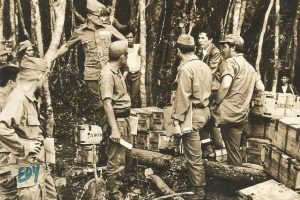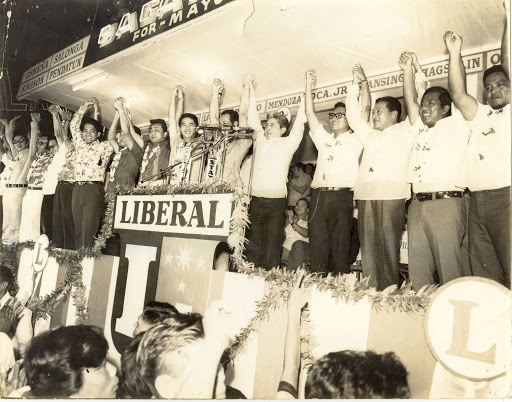Editor’s Note:
In this third part of this special report, we continue with a discussion of the revised, ‘10-Point Program’ of the Communist Party of the Philippines; we continue with a criticism of the CPP’s “version” of history.
As a backgrounder, the CPP Program and its amended Constitution were among the documents recovered by government forces in Baguio City last March 13, 2020, from Julius ‘Ka Nars’ Giron. He and two of his companions were killed after they allegedly resisted the serving of an arrest warrant against him.
The government also allegedly seized “documents of high intelligence value” that include the list of businesses silently paying off the CPP over the years.
Giron was the elected CPP chairman during the Second Congress of the CPP held from October 24 to November 7, 2016, in the hinterlands of Surigao del Sur.
It was only the second time for the CPP to hold a congress since its “founding congress” 48 years earlier, on December 26, 1968, in Tarlac province.
In this third series, we continue the discussion on the CPP’s conscious effort to distort historical facts and its consistent resort to self-aggrandizement to convince its followers that it is the “real party” of genuine change.
Introduction.
OF the 27-pages that comprised the CPP’s ’10-Point Program,’ only 7 pages actually contain the list of the policies (programs) the party intends to pursue before and after it seizes power.
The other 20 pages are mere “justifications” on the necessity for a “people’s democratic revolution” where all “Filipino communists must work and struggle… and must be ready to sacrifice their lives if necessary… to bring about a new Philippines that is completely independent, democratic, united, just and prosperous.”
This bringing about of a “new Philippines” is of course anchored on CPP founder, Jose Maria Sison’s “thesis” that the country remains a “semi-feudal, semi-colonial” that he first formulated more than 50 years ago.
In short, insofar as Sison and his followers like the late CPP chairman Julius Giron are concerned, the Philippines appears to be in a sort of “time-warp,” with no progress at all in all fields—political, economic, social, cultural, etc., in the last five decades.
And having insisted that ours is a “semi-feudal, semi-colonial” society and blind to the progress and development going all around them, it is no wonder then that the CPP’s slogans and “messaging” remained the same:
All Philippine governments are “puppets” of US Imperialism, the military and the police remain brutal and corrupt, government only pays lip service to human rights, the oligarchs are not only local allies of US Imperialism but are also in cahoots with bureaucrats to control the economy, land reform is a sham, industrialization remains a dream; the rest of the population, the farmers and workers in particular, are mired in poverty and perennially under exploitation by the ruling class.
Admittedly, these issues are, by themselves, not “communistic.”
Most of these issues, like land reform, domination of US Imperialism, police brutality, government corruption, social division between the rich and the poor, wage increase, among others, are the same issues and roots of social discontents that have plagued our society since the time of Spain’s colonial rule, during the Commonwealth years and even up to now.
And in incorporating these in the CPP’s program and slogans, the party, like its predecessor, the Partido Komunista ng Pilipinas (PKP), are conscious about the power of nationalism and class prejudice in uniting as many sectors of society as possible around its banner.

These issues are what would compel as many people as possible to believe that “only” thru the CPP and “only” by its armed struggle can all social changes be possible.
In other words, the CPP has always been conscious of projecting itself as the “real party of change.”
But viewed from another perspective, the CPP’s historical narrative is one also anchored on hate, prejudice and the justification in the use of force. Political power, indeed, grows out of a barrel of a gun, as one famous phrase of Mao Zedong puts it.
And having put its fate on the “barrel of the gun” in gaining power, there is no ground or basis therefore for discussion at all with any Philippine government on the issue of “lasting peace” and “national reconciliation.”
That the CPP does not actually aims to unite but, rather, to divide the country further, is also shown thru its remarkable insistence on still blaming Pres. Ferdinand Marcos for the August 21 1971 Plaza Miranda bombing.
This is despite the evidence that had surfaced since then that the bombing was actually planned by Sison—with the knowledge of the CPP’s “benefactor” among the country’s elite, Sen. Benigno Aquino Jr., — to create a “revolutionary situation.”
Accordingly, in its narrative, the CPP gave full credit to itself and the mass demonstrations in Manila that it organized from 1969 to the middle of 1972 that resulted to the “intense and bitter” conflict among “factions of the ruling classes” as behind the bombing it has since then blamed on Marcos.
In other words, the CPP has managed to impose the narrative (amplified by Sen. Aquino while living in the United States) that it was the ambition of Marcos to rule forever that was behind the declaration of martial rule the following year.
But if we now take into consideration the ‘M/V Karagatan’ incident of June 1972, when the government intercepted the CPP’s thousands of procured arms from China, the CPP’s lies behind the martial law declaration three months later becomes clear:
It was, firstly, to cover up this arms’ landing’s fiasco as it demonstrates the party’s “amateurishness” in waging a revolution; secondly, it was to cover up their secret alliance with the elite like Aquino and the Lopezes, that led to martial rule.
Not surprisingly, the MV Karagatan fiasco, like the role of Bernabe ‘Kumander Dante’ Buscayno (discussed in the previous article), was not mentioned at all in the party history read and disseminated during the Surigao Congress.
In other words, the CPP wants all embarrassing and incriminating facts in its history records erased in order to perpetuate its “official version” of events, in short, the perpetuation of a lie (end of part 3).
